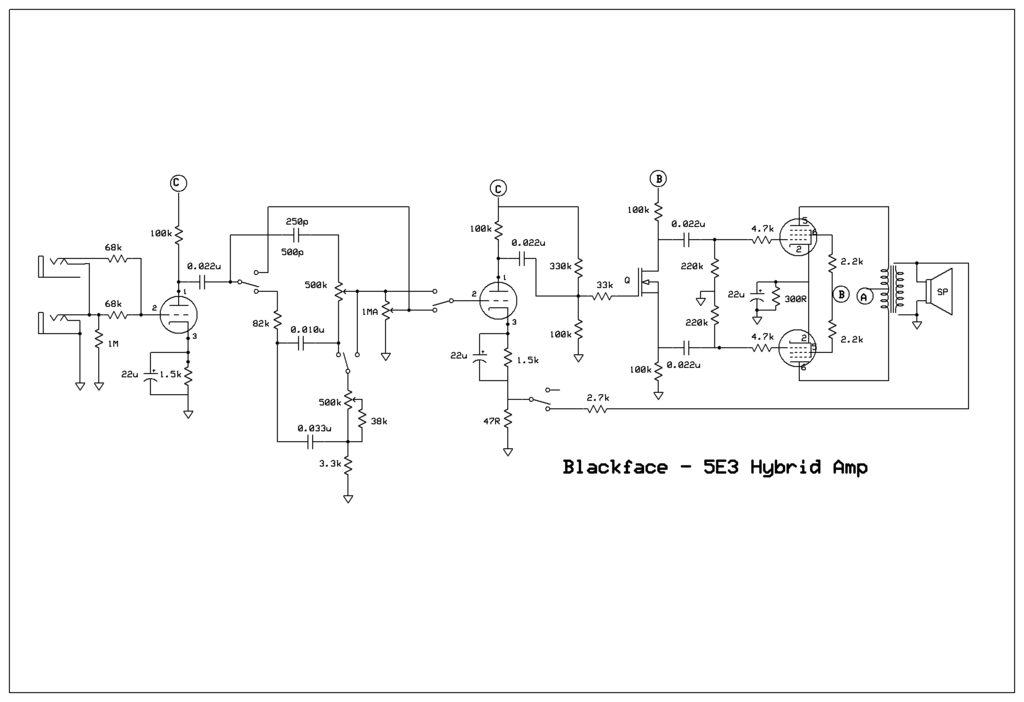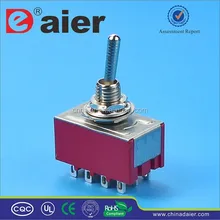Hey there ain't much room so you got to compromise. I never finished my MOSFET PI 12AQ5 amp, decided to go with the two triodes as gain stages and using my blackface-tweed tone control circuit. Then I thought, could I do a BF with a 5E3 volum-tone controls with a four pole switch? It was tough figuring out how to flip the controls around only using three pots. Then I thought dual pots but still a mess. Then I attacked it starting at the bass control to simulate the normal channel and it sort of fell into place. That is if it actually simulates what goes on in a 5E3. The 250p/500p cap, I am unsure of the value to go with. Will have to try real parts. What do you think? Crazy?






Comment